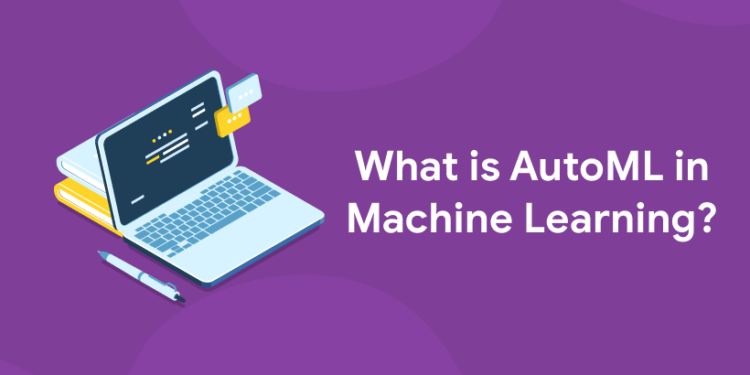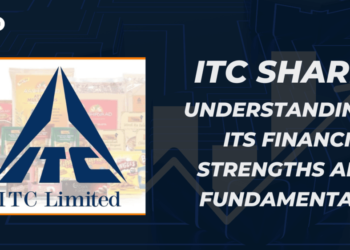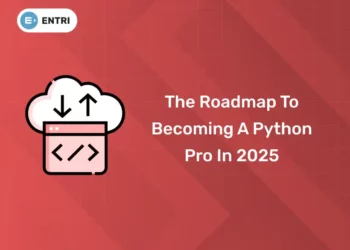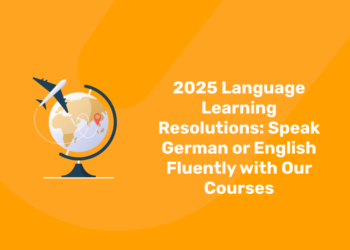Table of Contents
Machine Learning is the most popular technology nowadays!!! It is now used in practically every sector imaginable, which has increased its significance exponentially. But what about individuals who are unfamiliar with Machine Learning? That’s where AutoML, or automated machine learning, comes in! Automated machine learning (AutoML) is the process of automating the end-to-end process of applying machine learning to real-world challenges in the business. However, the usage of this huge and sophisticated technology is restricted to a small but growing number of data scientists and machine learning enthusiasts, and researchers.
A data scientist must use data pre-processing, parameter engineering, parameter extraction, and parameter selection approaches to prepare the dataset for inference and hence data analysis. Because many of these stages can only be completed by ML professionals, AutoML was offered as an artificial intelligence-based solution to the problem of simply implementing machine learning without requiring considerable experience. Google, one of the major technology companies, has developed Cloud AutoML for creating bespoke machine learning models based on business-to-business interactions.
Enroll in our certificate program in data science and Machine learning
What is AutoML?
The term automated Machine Learning (AutoML) refers to the process of creating Machine Learning solutions for data scientists without having to do endless questions on data preparation, model selection, model hyperparameters, and model compression parameters. Traditional machine learning model creation is time-consuming and requires extensive domain expertise to generate and compare hundreds of models. With automated machine learning, you can cut the time it takes to create production-ready ML models in half.
Furthermore, AutoML frameworks assist data scientists in:
- Data visualization
- Model intelligibility
- Model deployment
AutoML is thought to be about method selection, model hyperparameter adjustment, iterative modeling, and model assessment. It is about making Machine Learning activities easy such that less code is used and manual hyper tuning is avoided. The main technology of AutoML is hyperparameters search, which is used for preprocessing components and model type selection, as well as optimizing their hyperparameters. There are several types of optimization algorithms, ranging from random and grid search to genetic and Bayesian algorithms.
Current autoML frameworks also make use of their knowledge to boost speed. AutoML cannot replace the data scientist’s skills and project design, but it does encourage him to keep a strategic distance from the technical effort associated with model building. Driving AutoML open-source packages are:
- auto sklearn
- auto weka
- auto keras
How automated ML works
1: Which of the following is a JavaScript framework/library?
During training, Azure Machine Learning generates a number of parallel pipelines that test various methods and settings for you. The service iterates through ML algorithms and feature choices, producing a model with a training score after each iteration. The higher the score, the more likely the model is to “fit” your data. It will come to a halt when it reaches the experiment’s exit criterion. You may create and perform your automated ML training experiments in Azure Machine Learning by following these steps: Determine the type of machine learning issue to be solved: classification, forecasting, regression, or computer vision (preview). You may use either the automl python SDK or the studio online experience:
- Specify the source and format of the labeled training data: Numpy arrays or Pandas data frame
- Configure the automated machine learning parameters that determine how many iterations are over different models, hyperparameter settings, advanced preprocessing/featurization, and what metrics to look at when determining the best model.
- Submit the training job.
- Review the results
Can AutoML replace Data Scientists?
It is critical to recognize that regardless of how AutoML advances, it cannot yet fully grasp what explicit information represents for an organization, its company, and the context of the business. Domain Knowledge is a uniquely human ability that cannot be automated. AutoML is unlikely to replace Data Scientists. Did personal computers obviate the need for mathematicians? No, the need for mathematicians increased greatly because their calculations could be used to test heavy theories. Regardless of whether AutoML can create any Machine Learning model on demand, statistical models have flaws. This is where the specialists come in, figuring out how to design the model in such a manner that it suits the situation properly. AutoML is getting close to Strong AI. Strong AI is associated with achieving human-level understanding in an environment-independent and non-task-centered manner. In a fixed setting, AutoML is doing a specific determination task.
What is the difference between AutoML and Neural Architecture Search?
The new kings of deep learning are AutoML and Neural Architecture Search (NAS). They are a quick and clumsy way to achieve amazing precision for your AI assignment without a lot of labor. Basic and feasible; this is what we want from AI! AutoML is just a way to assimilate all of the mind-boggling aspects of deep learning. All you need is the data. Allow AutoML to handle the most difficult design task! The NAS algorithm seeks the optimum neural network design. Allow a computation to take numerous blocks and arrange them to frame a network. That network should be trained and tested. Adjust the blocks you used to build the network and how you joined them based on your results.
This new AutoML and NAS present stimulating challenges for the AI community, as well as an open path for another scientific breakthrough.
When to use AutoML: classification, regression, forecasting, computer vision & NLP
When you want Azure Machine Learning to train and optimize a model for you based on a measure you define, use automated ML. Automated ML democratizes the machine learning model creation process and enables users to discover an end-to-end machine learning pipeline for any problem, regardless of data science knowledge. Automated ML may be used by ML specialists and developers across sectors to:
- Implement ML solutions without extensive programming knowledge
- Save time and resources
- Leverage data science best practices
- Provide agile problem-solving
Classification
A frequent machine learning job is classification. Classification is a sort of supervised learning in which models learn from training data and then apply their knowledge to fresh data. Deep neural network text features for categorization, for example, are available from Azure Machine Learning. Fraud detection, handwriting recognition, and object identification are all instances of categorization.
Regression
Regression problems, like classification, are a frequent supervised learning task. Azure Machine Learning has capabilities designed expressly for these needs. In contrast to classification, which predicts categorical output values, regression models predict numerical output values based on independent variables. The goal of regression is to estimate how one variable affects the others in order to assist identify the link between those independent predictor variables. For example, car prices are determined by factors such as gas mileage, safety rating, and so on. Learn more and witness a regression case using automated machine learning.
Time-series forecasting
Forecasting is an essential aspect of every organization, whether it be for income, inventory, sales, or client demand. Using automated ML, you may combine methodologies and approaches to provide a suggested, high-quality time-series forecast. Unlike traditional time series approaches, this methodology has the benefit of intuitively including various contextual factors and their relationships during training. For all objects in the dataset and prediction horizons, automated ML learns a single, but frequently internally branched model. As a result, more data is available to estimate model parameters.
Advanced forecasting configuration includes:
- holiday detection and featurization
- time-series and DNN learners (Auto-ARIMA, Prophet, ForecastTCN)
- many models support through grouping
- rolling-origin cross-validation
- configurable lags
- rolling window aggregate features
Computer vision
Support for computer vision tasks makes it simple to train models on picture data for situations such as image categorization and object recognition. You can do the following using this capability: Integrate seamlessly with the Azure Machine Learning data labeling capabilities. Use labeled data to create picture models. Model performance may be improved by describing the model algorithm and modifying the hyperparameters. In Azure Machine Learning, you may download or deploy the generated model as a web service. Scale up your operations by utilizing Azure Machine Learning MLOps and ML Pipelines. The automl python SDK allows you to create AutoML models for vision tasks. The Azure Machine Learning studio UI provides access to the resultant experimental jobs, models, and outputs.
Natural language processing: NLP
With automated ML’s support for natural language processing (NLP) activities, you can rapidly construct models trained on text data for text classification and named entity identification situations. The Azure Machine Learning automl python SDK allows you to create automated ML-trained NLP models. The Azure Machine Learning studio UI provides access to the resultant experimental jobs, models, and outputs.
The NLP capability allows for:
- End-to-end deep neural network NLP training with the latest pre-trained BERT models
- Seamless integration with Azure Machine Learning data labeling
- Use labeled data for generating NLP models
- Multi-lingual support with 104 languages
- Distributed training with Horovod
Training, validation, and test data
You give the training data to train ML models with automated ML, and you may define the type of model validation to do. Model validation is performed as part of the training process using automated ML. To put it another way, automated ML uses validation data to modify model hyperparameters depending on the applied method in order to identify the ideal combination that best matches the training data. However, because the model continues to develop and fit the validation data, the same validation data is utilized for each tuning cycle, which causes model evaluation bias. Automated ML enables the use of test data to evaluate the final model that automated ML suggests at the end of your experiment to assist validate that such bias is not introduced to the final suggested model. This suggested model is evaluated by default at the conclusion of your experiment when you give test data as part of your AutoML experiment setting (preview).
Feature engineering
The act of applying domain knowledge of the data to develop features that help ML algorithms learn better is known as feature engineering. Scaling and normalizing approaches are used in Azure Machine Learning to help with feature engineering. These approaches and feature engineering are referred to together as featurization.
Customize featurization
Additional feature engineering techniques such as encoding and transforms are also available.
Enable this setting with:
- Azure Machine Learning Studio: Enable Automatic featurization in the View additional configuration section with these steps.
- Python SDK: Specify
"feauturization": 'auto' / 'off' / 'FeaturizationConfig'in your AutoMLConfig object. Learn more about enabling featurization.
Ensemble models
Ensemble models are supported by automated machine learning and are enabled by default. By mixing many models rather than employing single models, ensemble learning increases machine learning outcomes and prediction performance. The ensemble iterations appear as the job’s last iterations. For merging models, automated machine learning employs both voting and stacking ensemble methods: Voting: predicts based on a weighted average of projected class probabilities (for classification tasks) or estimated regression goals (for regression tasks) (for regression tasks). Stacking: stacking is the process of combining heterogeneous models and training a meta-model based on the output of the individual models.











